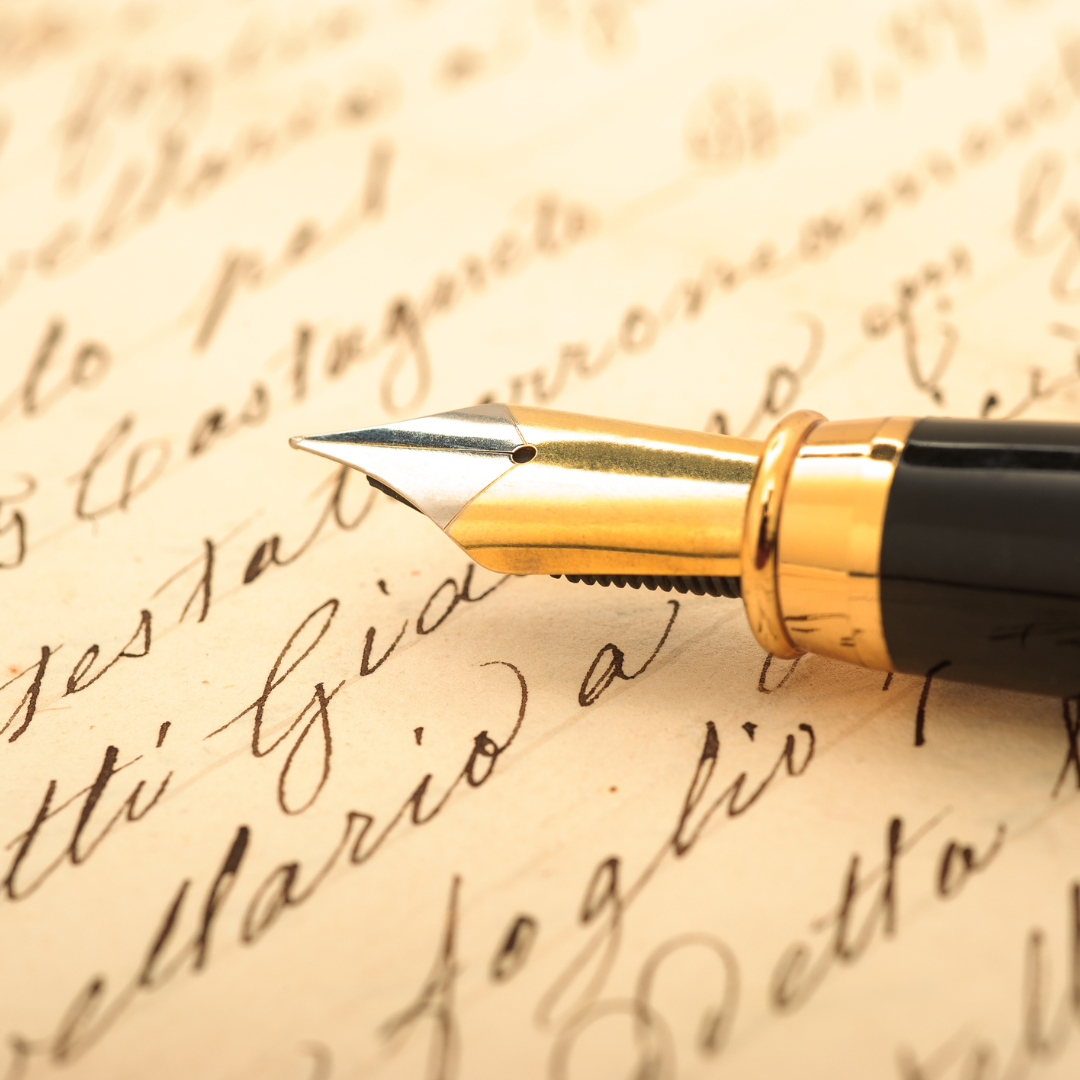
The Case for the Fountain Pen
~5-6 min read
The fountain pen was invented in the mid-1800s. Before then, dip pens were used to write with ink, and before that, quill pens. Commercial ballpoint pens were introduced in 1945, just following World War II. Since then, the use of fountain pens has declined, and the market is dominated by ballpoint pens. They are mass produced and can be purchased very cheaply.
Once pens became portable, they also became accessories to be carried for everyday use. The writing instrument you take out of your pocket to sign a document or take a note can say something about you.
The fountain pen: The standard transmission of pens
If ballpoint pens are so great, why would anyone choose to use a fountain pen now? The choice is intentional.
The comparison might be like that between a car with a standard transmission and one with an automatic transmission. A person driving a standard transmission is actually driving the car. The driver chooses the gear. The driver engages the clutch to connect the engine to the drive train. The driver adjusts the gears to align with driving conditions and load-bearing requirements. A vehicle with a standard transmission is not an appliance that you plug and play, it’s an instrument that you employ. Not everyone can drive a standard. (And now we have cars that drive themselves.)
Many of the same considerations apply to a fountain pen. You are not just writing, you are using a mechanical ink delivery system to apply the ink of choice to the appropriate paper.
The ink in a ballpoint pen is usually (but not always) blue or black. The ink in a fountain pen is a personal choice.
The Pen, The Paper, The Ink
The simplest fountain pens are cartridge pens. The ink is contained in small plastic cartridges that are inserted into the barrel of the pen. When the ink is exhausted, the cartridge is removed, and a new cartridge is inserted. The choice of ink colours for cartridge pens is generally limited.
There are many fountain pens with filling mechanisms that allow the user to fill the pen directly from an ink bottle. The range of ink colours is huge and new colours are produced all the time. Visit a fountain pen store (online) to see the vast range of ink colours available.
At this moment I have a Scriveiner pen inked in Deep Pine, a Kaweko Sport inked in Black Cherry, a Pilot Metropolitan inked in Deep Pine, and a Zenzoi Bamboo pen inked in blue. Each pen has its own writing characteristics. The Scriveiner and Kaweco are rather wet, the Pilot Metropolitan is rather dryer, and the Zenzoi is in between. And writing with each pen is different. The flow of the ink impacts how you write. Other ink colours in my personal stock include black, Tender Purple and Harmonious Green.
Not all pens and inks can be used on all paper. Wet pens work best on heavier paper. An excellent paper for fountain pens is Claire Fontaine at 90 grams per square metre. A more than adequate paper is found in Leuchtturm notebooks with a paper density of 80 grams per square metre. Drier pens can be used with normal “printer paper” but may have some bleed-through. Which paper to use is also an intentional choice.
Embrace the charm (and inked fingers)
Fountain pens need maintenance and cleaning is part of the charm of operating a fountain pen. It is not a passive sport. Yet again, more in common with driving a car. The pen requires regular cleaning, which also provides an opportunity to change ink colours. You can tell someone who writes with a fountain pen by the ink on their fingers.
The ink takes time to dry on the page. The smoother the paper, the longer it can take to dry. While it is drying, it is easily smudged. More care is needed when writing with a fountain pen than with a ballpoint pen.
While writing with a fountain pen may not be for everyone, it is something everyone should at least try, to appreciate the experience. They represent more of our heritage. I started school when ballpoint pens were just coming on the market, so they were expensive and hard to find. My earliest writing instruments were pencils and fountain pens, so I have always had a soft spot for fountain pens over the years. Trying out a new pen is a learning experience.


